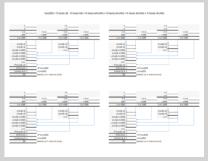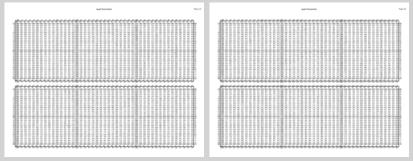
NavList:
A Community Devoted to the Preservation and Practice of Celestial Navigation and Other Methods of Traditional Wayfinding
From: Hanno Ix
Date: 2015 Jun 15, 06:38 -0700
I have observed. Greg and Peter fly through it, I labor and make many mistakes.
correctness to them - for the sake of discussion here say 99 % for a single addition,
95% for a single multiplication and 90% for a sign decision - and finally arrive at an
estimated overall probability of correctness by multiplying all in to a single product P.
Since P is a product it falls very fast with the number of the components that go into it
Congratulations again to the article – and thanks for the many interesting discussions on that topic around the past few months, they’ve kept my brain busy!
And wondering: couldn’t we also remove the last multiplication? Well, it turns out that the formula can be rewritten as (use signed values):
hav(ZD) = ½ hav(L-d) - ½ hav(L+d) + ¼ hav(L+d+LHA) + ¼ hav(L+d-LHA) + ¼ hav(L-d+LHA) + ¼ hav(L-d-LHA)
This is actually very easy to compute with a table of ¼ haversines (“eighth-versine”?? I‘ll call it “qhav” for now). See attached 2-page table and form. No multiplication anymore, a few sums, one substraction, one division by 4 (can be done "visually"): the computation takes me approx. 5 mins, and slightly less if the AP is such that L-D (or L+d) and LHA are whole numbers of degrees.
Regarding precision, with the table rounded to 5 decimals the error on ZD is below 1nm (it does go up to a few nm for 2 points opposite each other near the poles).
Thanks to everyone in the group – I’m learning a lot and enjoying it.
Christophe
Attached File:
(quart-haversine-form.pdf: Open and save or View online)
Attached File:
(quart-haversine-table.pdf: Open and save or View online)








